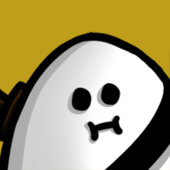newbie question
Is AI just a sequence of if statements or is there a more elegant, but still simple solution.
Brett
When I do AI I use select case
AI Integer;
Radom AI(4)
Select Case AI
Case 1: Move Up
Case 2: Move Down
Case 3: Move Left
Case 4: Move Right
End Select
Try this out you will have to change but this is the idea!
http://homepages.go.com/~zatanik/
AI Integer;
Radom AI(4)
Select Case AI
Case 1: Move Up
Case 2: Move Down
Case 3: Move Left
Case 4: Move Right
End Select
Try this out you will have to change but this is the idea!
http://homepages.go.com/~zatanik/
"AAAAAAHHHHHHHHHHHHH", screamed Mike.
Is AI just a series of if statements?
Well, it depends how you look at it.
Any form of AI can be represented as any other form of AI really, it''s a question of looking at the world state, analysing it and finding a solution to solve your goal.
Condition action rules or if-then statements are a single method of AI called a finite state machine.
This means that there are a finite number of input states (if statements or condition clauses) and a finite number of output states (then statements or action clauses). For any one input state you will always get the same output state and all states are considered to be based on logic.
By logic I mean TRUE and FALSE statements.
I''ll move on to Fuzzy state machines now.
These are based on fuzzy logic which is similar to normal logic except that there are few absolutes. Rarely is a statement based on complete TRUE or FALSE statements rather statements are considered partially TRUE and partially FALSE. Consider several options for an agent (or enemy AI) in your game. They can move up, down, left or right. How do they make the choice of the correct move?
Each square they can move into have various attributes. Does it contain a power up, does it contain an enemy, is it closer to the goal square that you''re trying to get to, will it move you closer to the human player allowing you to kill them. Things like that.
You use heuristics to calculate the value of each square. Heuristics bascially mean applying some point system to each factor you''re considering and then making a choice based on the value of each option.
Here you have four choices, you could say add five if a square contains a power up, -one for each square between this square and the goal square etc. Then the square with the highest point value at the end is the one you step into.
These are the main two methods used in games for AI decision making, beyond these there are.
Neural networks, which are systems using the same mechanisms of the human brain i.e. neurons and connections.
Expert systems, logical systems, which use a set of trees of questions to decide on the set a particular example belongs to i.e.
Does it give birth to live young?
NO.
Does it have feathers?
YES.
Answer
It''s a bird.
Beyond that, I''m afraid I have to go to the pub.
Excuse me.
Mike
Is AI just a series of if statements?
Well, it depends how you look at it.
Any form of AI can be represented as any other form of AI really, it''s a question of looking at the world state, analysing it and finding a solution to solve your goal.
Condition action rules or if-then statements are a single method of AI called a finite state machine.
This means that there are a finite number of input states (if statements or condition clauses) and a finite number of output states (then statements or action clauses). For any one input state you will always get the same output state and all states are considered to be based on logic.
By logic I mean TRUE and FALSE statements.
I''ll move on to Fuzzy state machines now.
These are based on fuzzy logic which is similar to normal logic except that there are few absolutes. Rarely is a statement based on complete TRUE or FALSE statements rather statements are considered partially TRUE and partially FALSE. Consider several options for an agent (or enemy AI) in your game. They can move up, down, left or right. How do they make the choice of the correct move?
Each square they can move into have various attributes. Does it contain a power up, does it contain an enemy, is it closer to the goal square that you''re trying to get to, will it move you closer to the human player allowing you to kill them. Things like that.
You use heuristics to calculate the value of each square. Heuristics bascially mean applying some point system to each factor you''re considering and then making a choice based on the value of each option.
Here you have four choices, you could say add five if a square contains a power up, -one for each square between this square and the goal square etc. Then the square with the highest point value at the end is the one you step into.
These are the main two methods used in games for AI decision making, beyond these there are.
Neural networks, which are systems using the same mechanisms of the human brain i.e. neurons and connections.
Expert systems, logical systems, which use a set of trees of questions to decide on the set a particular example belongs to i.e.
Does it give birth to live young?
NO.
Does it have feathers?
YES.
Answer
It''s a bird.
Beyond that, I''m afraid I have to go to the pub.
Excuse me.
Mike
This topic is closed to new replies.
Advertisement
Popular Topics
Advertisement








